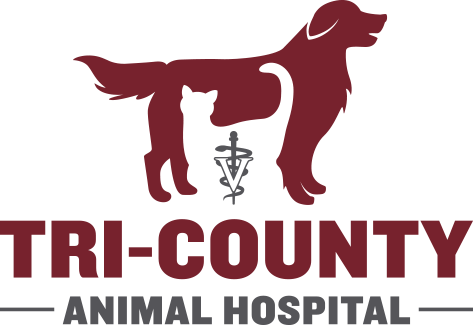Arthritis in Cats
Arthritis in Cats – Overview
- “Arthritis” is the medical term for inflammation of the joints; “osteoarthritis” is a form of joint inflammation (arthritis) characterized by long-term (chronic) deterioration or degeneration of the joint cartilage
- Progressive and permanent deterioration of joint cartilage
- Also known as “degenerative joint disease” or DJD
Genetics
- Cats—causes of secondary degenerative joint disease (progressive and permanent deterioration of joint cartilage) are dislocation of the kneecap (patellar luxation), abnormal development of the hip (hip dysplasia), and any joint disease (known as an “arthropathy”)
Affects
Signs/Observed Changes in the Pet
- Secondary degenerative joint disease (progressive and permanent deterioration of joint cartilage) due to congenital (present at birth) disorders (such as hip dysplasia) seen in immature pets; some present with DJD signs when older (such as cases of hip or elbow dysplasia)
- Secondary to trauma—any age
- Cats—obvious lameness may not be seen; instead, may have difficulty grooming, jumping onto furniture, or accessing the litter box; may have increased irritability
- Stiff-legged or altered gait (such as “bunny hopping” in hip dysplasia)
- Not using the affected leg(s)
- Decreased range of motion
- Grating detected with joint movement (known as “crepitus”)
- Joint swelling (fluid buildup in the joint [known as “joint effusion”] and/or thickening of the joint capsule)
- Joint pain
- Joint instability
- Obvious joint deformity
Causes of Feline Arthritis
- Primary—no known cause (so-called “idiopathic osteoarthritis”)
- Secondary—results from an initiating cause, such as abnormal wear on normal cartilage (examples, secondary to joint instability, abnormal joints, trauma to cartilage or supporting soft tissues) or normal wear on abnormal cartilage (example, secondary to defects in the bone and cartilage [known as “osteochondral defects”])
Treatment for Arthritis in Cats Health Care
- Medical treatment—usually tried initially
- Physical therapy—very beneficial
- Maintaining or increasing joint motion—passive range of motion exercises
- Pain management—cold and heat therapy
- Muscle tone/strengthening exercise
Activity
- Limited to a level that minimizes aggravation of clinical signs
Diet
- Weight reduction for overweight pets—decreases stress placed on arthritic joints
- Omega fatty acids may decrease inflammation
Surgery
- Surgical options—improve joint geometry or remove bone-on-bone contact areas
- Surgical procedure cutting into or entering a joint (known as an “arthrotomy”)—used to remove aggravating causes (such as bone and/or cartilage fragments or flaps)
- Using a special lighted instrument called an “arthroscope” (general term for procedure is “arthroscopy”) to allow the pet surgeon to see inside the joint—used to diagnose and remove aggravating causes; flushing the joint may be beneficial
- Reconstructive procedures—used to eliminate joint instability and correct structural or anatomic problems (such as in pets with dislocation of the kneecap [patellar luxation])
- Joint removal—such as removal of the femoral head (the “ball”) of the hip joint for cases of abnormal development of the hip (hip dysplasia; procedure known as “femoral head and neck ostectomy” or FHO)
- Joint replacement—total hip replacement is common; total elbow replacement still is experimental
- Joint fusion (known as “arthrodesis”)—in selected long-term (chronic) cases and for joint instability
Medications for Cat’s Arthritis
- Medications presented in this section are intended to provide general information about possible treatment. The treatment for a particular condition may evolve as medical advances are made; therefore, the medications should not be considered as all inclusive
- Nonsteroidal anti-inflammatory drugs (NSAIDs) to decrease pain and inflammation—examples are carprofen, deracoxib, etodolac, meloxicam, and tepoxalin for dogs; meloxicam for cats
- Medications intended to slow the progression of arthritic changes and protect joint cartilage (known as “chondroprotective drugs”), such as polysulfated glycosaminoglycans, glucosamine, and chondroitin sulfate; examples include Adequan, Cosequin, Glyco-Flex, and Syn-flex—may help limit cartilage damage and degeneration; may help alleviate pain and inflammation
- Steroids—decrease inflammation; however, long-term (chronic) use may delay healing and may initiate damage to joint cartilage; examples of steroids are prednisone administered by mouth or triamcinolone administered by injection into the joint (known as an “intra-articular injection”)
Follow-Up Care Patient Monitoring
- Clinical deterioration—indicates need to change drug selection or dosage; may indicate need for surgical intervention
Preventions and Avoidance
- Early identification of conditions that may lead to osteoarthritis and prompt treatment to help reduce progression of secondary conditions
Expected Course and Prognosis
- Slow progression of disease likely
- Medical or surgical treatment usually allows a good quality of life
Key Points
- Medical therapy is designed to control signs of osteoarthritis (known as “palliative treatment”) and not to cure the condition
- Slow progression of disease likely
- Medical or surgical treatment usually allows a good quality of life
- Discuss treatment options, activity level, and diet with us
